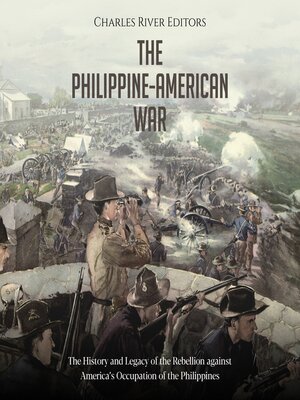The Philippine-American War
audiobook (Unabridged) ∣ The History and Legacy of the Rebellion against America's Occupation of the Philippines
By Charles River Editors

Sign up to save your library
With an OverDrive account, you can save your favorite libraries for at-a-glance information about availability. Find out more about OverDrive accounts.
Find this title in Libby, the library reading app by OverDrive.



Search for a digital library with this title
Title found at these libraries:
| Loading... |
On April 27, 1898 six American ships of the line, led by the Olympia with Commodore George Dewey aboard, headed toward Manila Bay. After several days of sailing over the South China Sea, Dewey hoped to sail past the Spanish fort at Corregidor to arrive at Manila without detection, and sailed without lights in order to do so. He made it into the bay, where the naval battle with the Spanish South Pacific Squadron began in the wee hours of May 1, 1898. Dewey was a student of the Mahanian school of naval strategy, so called for the aggressive Alfred T. Mahan, a top naval strategist and President of the Naval War College. As such, he concentrated his efforts on the offensive, preferring to meet the Spanish fleet on his own terms and to avoid, if it all possible fire from land-based batteries that lined Manila Bay. He refused to engage the batteries on land, sailing straight past the firing batteries and toward the Spanish fleet. Dewey issued his most famous command just before 6:00 that morning, "You may fire when ready, Gridley!"
The leader of an 1896 insurgency against the Spanish, Emilio Aguinaldo y Famy, had left the Philippines in an agreement following Spanish promises of reform that never materialized. As a recognized Filipino leader, he was brought to Manila by an American ship within days of the American victory at Manila, but the events that followed were to prove controversial and lead to U.S. control of the Philippines, along with a revolution of the Filipino people that would prove to be far longer and more costly than the Spanish-American war itself. The Philippines had no meaningful connection to Cuba except as a Spanish colony, and Spanish forces in the islands were no threat to the U.S. Pacific coast, but the island chain appeared to offer a convenient location for a naval base in an age when warships were coal-powered and needed coaling bases.






